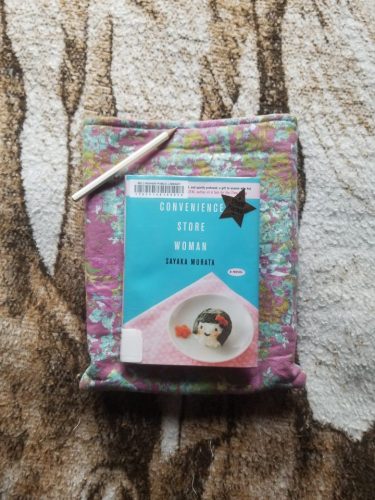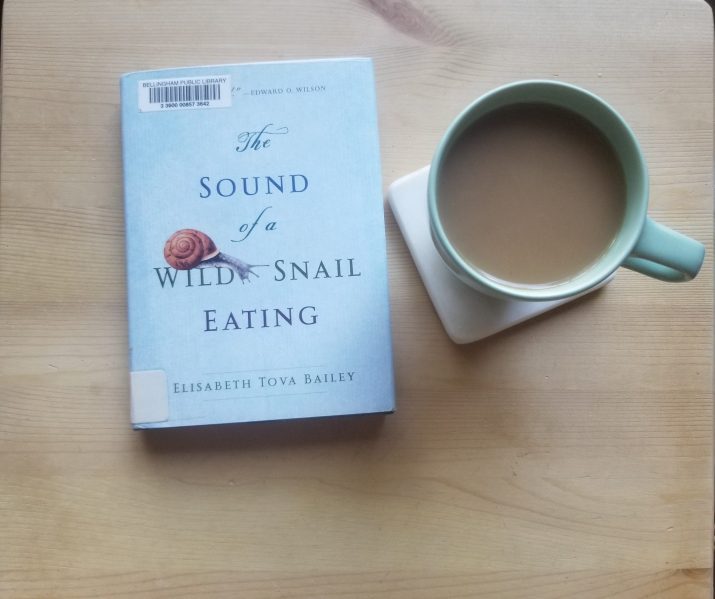I read The Sound of a Wild Snail Eating by Elizabeth Tova Bailey for The…

Convenience Store Woman by Sayaka Murata
Convenience Story Woman by Sayaka Murata, translated by Ginny Tapley Takemori was a facinating little book that I could not stop thinking about. I was intrigued and confused and wasn’t sure why. Perhaps my conflicting thoughts and feelings were due to my own ignorance of Japanese novels or maybe it was related to the challenge of reading a translated novel. I really had no idea. So I spent some time rereading the book and reading official reviews on The New York Times and The New Yorker and found that I was not alone in feeling unsettled. Katy Waldman of The New Yorker pondered whether this book was considered horror. And both reviewers note the unusual, and apparent psychopathic nature of the main character. Yes! This was at least part of it. Of course, there was / is more to examine:
It’s told in first person, which made the book feel pleasantly intimate and was not off-putting like some first person narratives. Keiko is an unusual person, who even as a child did not fit in with her peers and family. Her response to a bird’s death, or fighting on the playground was not guided by what one might think of as a typical response. She is not bothered by either but is pragmatic (6-9) and seeks solutions that horrify those around her. She is hyper logical and appears to lack empathy. Not surprisingly she is friendless as a child, though her younger sister adores her (11). And she carries the burden of knowing she’s different into adulthood “believing that [she] had to be cured” (12).
In her younger years she’s hired at a new convenience store and finds herself in a place where she can be her true self while hiding in plain sight. No one expects her to be anything other than a good employee, fulfilling all requirements, becoming as she describes herself: a cog.
As she ages it does start to become apparent to her friends and family that she is still a bit different. She does try to get different “career positions, but having only ever had the same job” she never makes it far. She seems only to look beyond working part-time at the store to please those around her. She’s satisfied with her place in the world.
“The morning period is passing normally in the brightly lit box of the convenience store, I feel. Visible outside the windows, polished free of fingerprints, are the figures of people rushing by. It is the start of another day, the time when the world wakes up and the cogs of society begin to move. I am one of those cogs, going round and round. I have become a functioning part of the world, rotating in the time of day called morning” (4).
Murata’s skill as a writer is apparent in her ability to fully captured a sense of place. I could see, hear, and smell the convenience store that Keiko worked in. It was strangely comforting; strange because in general I don’t enjoy the feeling of most stores, they tend to be overstimulating: too bright, too much noise, the shelves too busy looking. But I was given a way into this world that was inviting and safe.
Lest I spoil anymore of this book for others like me who did not read this right away, I’ll leave you with this: can a misogynist solve spinsterhood? And what really needs to be “cured”?
This book has been described as funny. And it is. But it’s also deeply unsettling and frustrating (I’m thinking specifically of the misogynistic character). Murata seems to be playing with or questioning capitalism, ambition, the pressures of society, and what makes people human, or more specifically what makes women women. The writing style seemed wooden to me at first and there’s a tension between it’s rigidity and the intimacy of the first-person narrative, but now I think it fits perfectly in the story she’s telling: Keiko is stiff, different, she can’t meet all expectations. But she can meet some of them, those that are her truest self and it’s damned creepy when she does.



Comments (0)